Abstract
As many as 86% of intensive care unit (ICU) alarms are false. Multiple signal integration of temporal monitor data by decision tree induction may improve artifact detection. We explore the effect of data granularity on model-building by comparing models made from 1-second versus 1-minute data. Models developed from 1-minute data remained effective when tested on 1-second data. Model development using 1-minute data means that more hours of ICU monitoring (including more artifacts) can be processed in less time. Compression of temporal data by arithmetic mean, therefore, can be an effective method for decreasing knowledge discovery processing time without compromising learning.
Full text
PDF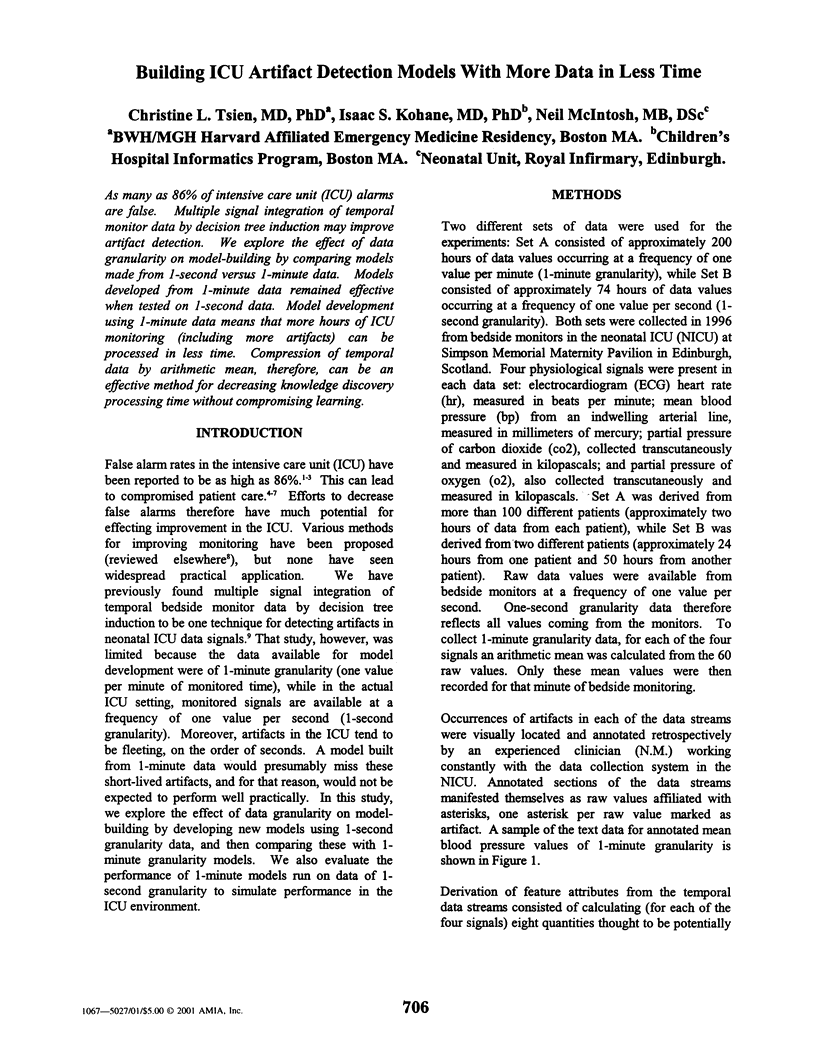
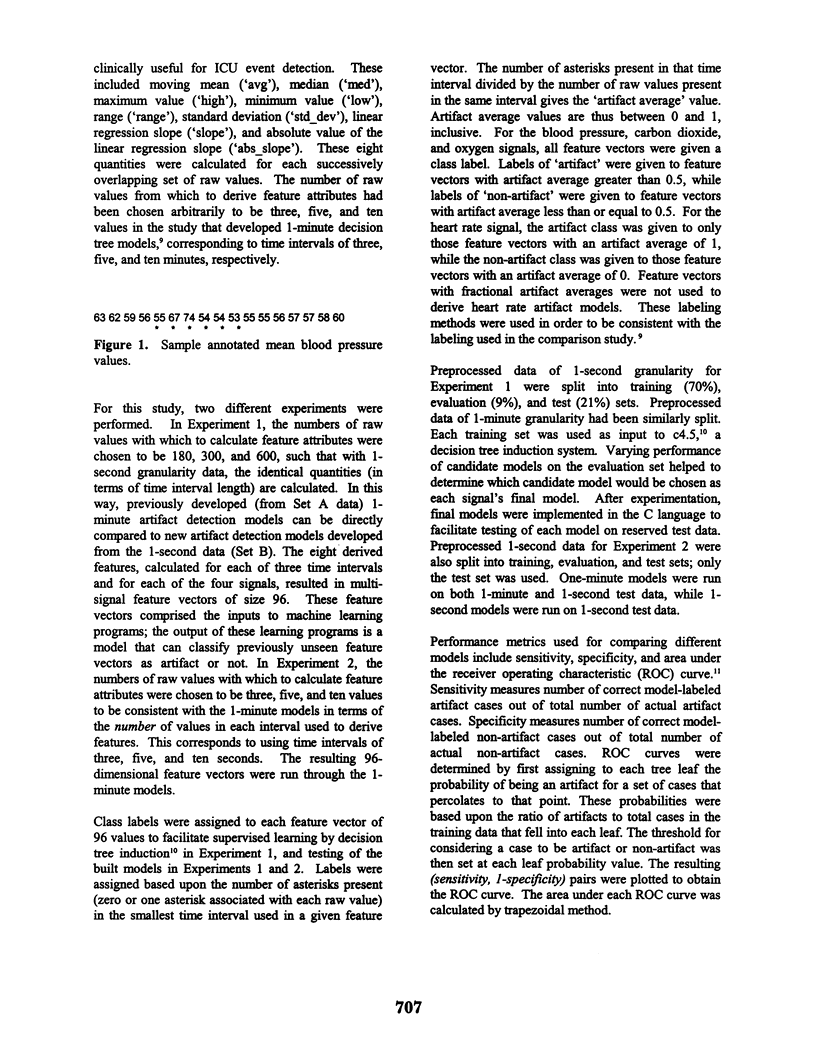
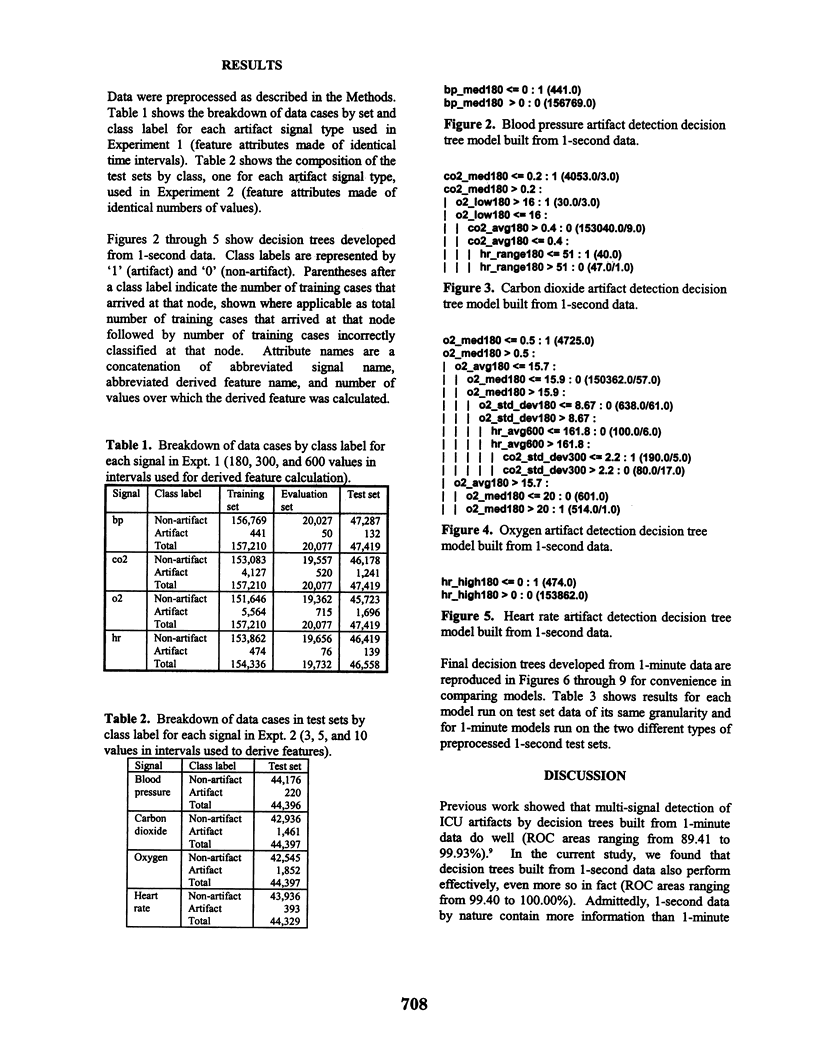
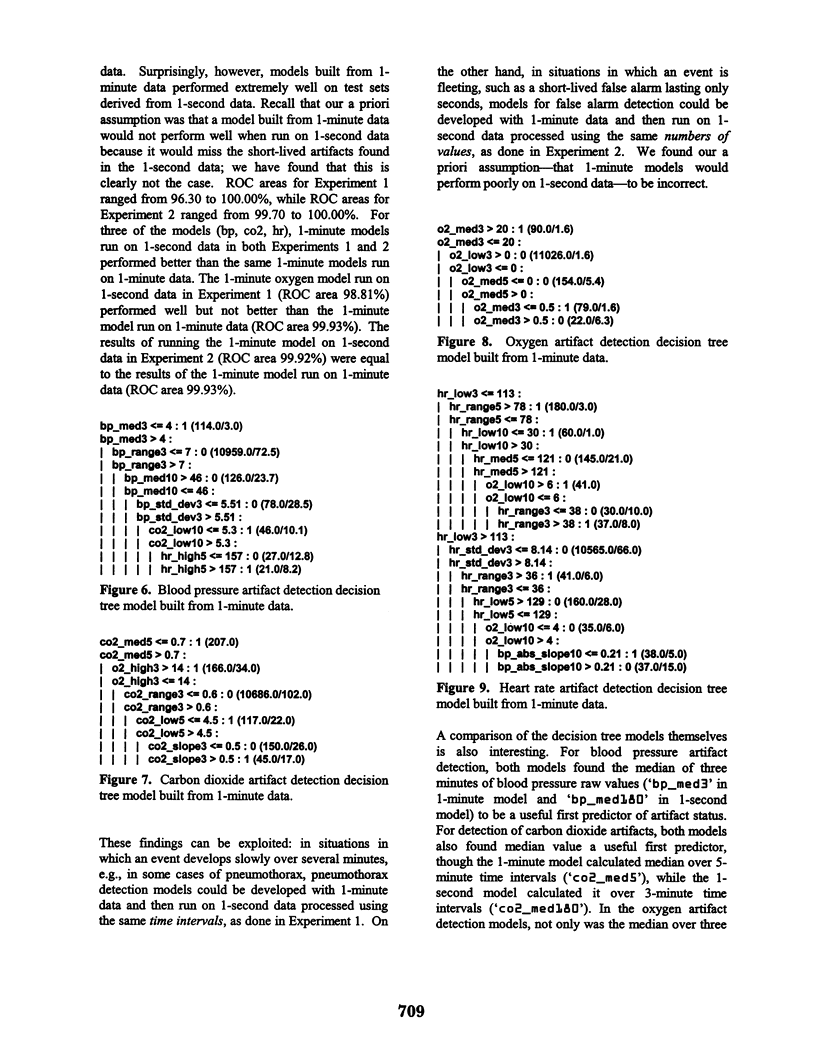
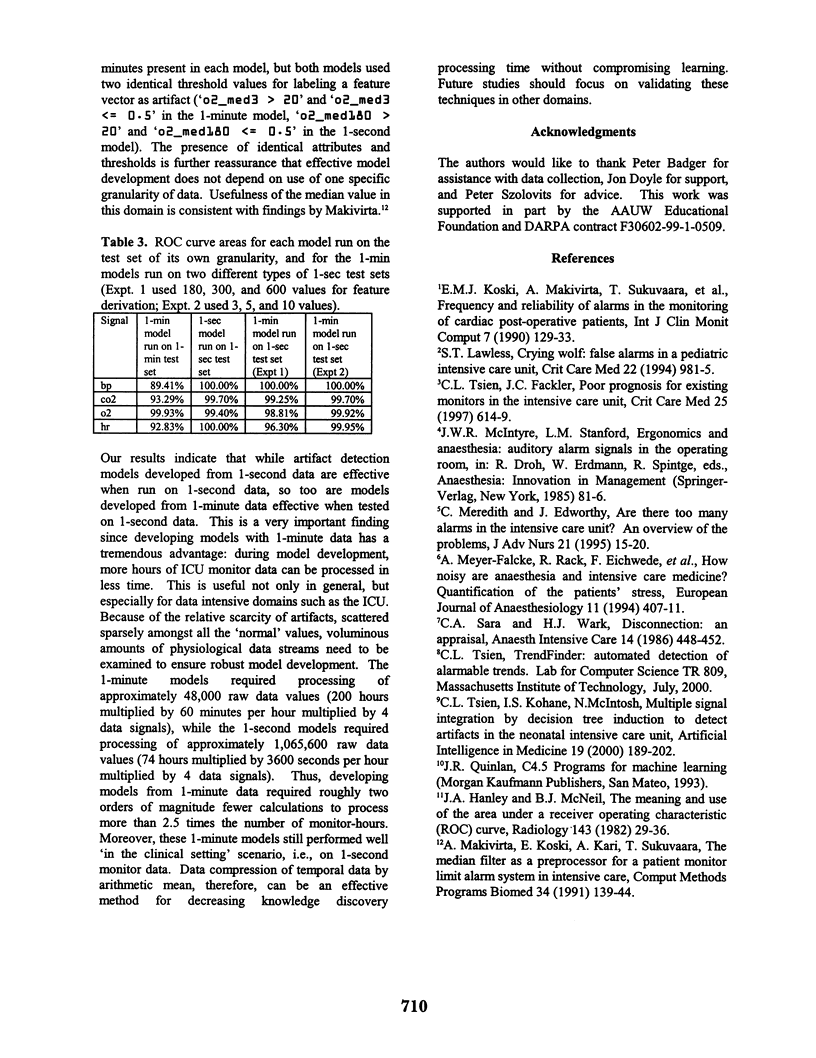
Selected References
These references are in PubMed. This may not be the complete list of references from this article.
- Hanley J. A., McNeil B. J. The meaning and use of the area under a receiver operating characteristic (ROC) curve. Radiology. 1982 Apr;143(1):29–36. doi: 10.1148/radiology.143.1.7063747. [DOI] [PubMed] [Google Scholar]
- Koski E. M., Mäkivirta A., Sukuvaara T., Kari A. Frequency and reliability of alarms in the monitoring of cardiac postoperative patients. Int J Clin Monit Comput. 1990 Apr;7(2):129–133. doi: 10.1007/BF01724206. [DOI] [PubMed] [Google Scholar]
- Lawless S. T. Crying wolf: false alarms in a pediatric intensive care unit. Crit Care Med. 1994 Jun;22(6):981–985. [PubMed] [Google Scholar]
- Meredith C., Edworthy J. Are there too many alarms in the intensive care unit? An overview of the problems. J Adv Nurs. 1995 Jan;21(1):15–20. doi: 10.1046/j.1365-2648.1995.21010015.x. [DOI] [PubMed] [Google Scholar]
- Meyer-Falcke A., Rack R., Eichwede F., Jansing P. J. How noisy are anaesthesia and intensive care medicine? Quantification of the patients' stress. Eur J Anaesthesiol. 1994 Sep;11(5):407–411. [PubMed] [Google Scholar]
- Mäkivirta A., Koski E., Kari A., Sukuvaara T. The median filter as a preprocessor for a patient monitor limit alarm system in intensive care. Comput Methods Programs Biomed. 1991 Feb-Mar;34(2-3):139–144. doi: 10.1016/0169-2607(91)90039-v. [DOI] [PubMed] [Google Scholar]
- Sara C. A., Wark H. J. Disconnection: an appraisal. Anaesth Intensive Care. 1986 Nov;14(4):448–452. doi: 10.1177/0310057X8601400421. [DOI] [PubMed] [Google Scholar]
- Tsien C. L., Fackler J. C. Poor prognosis for existing monitors in the intensive care unit. Crit Care Med. 1997 Apr;25(4):614–619. doi: 10.1097/00003246-199704000-00010. [DOI] [PubMed] [Google Scholar]
- Tsien C. L., Kohane I. S., McIntosh N. Multiple signal integration by decision tree induction to detect artifacts in the neonatal intensive care unit. Artif Intell Med. 2000 Jul;19(3):189–202. doi: 10.1016/s0933-3657(00)00045-2. [DOI] [PubMed] [Google Scholar]


